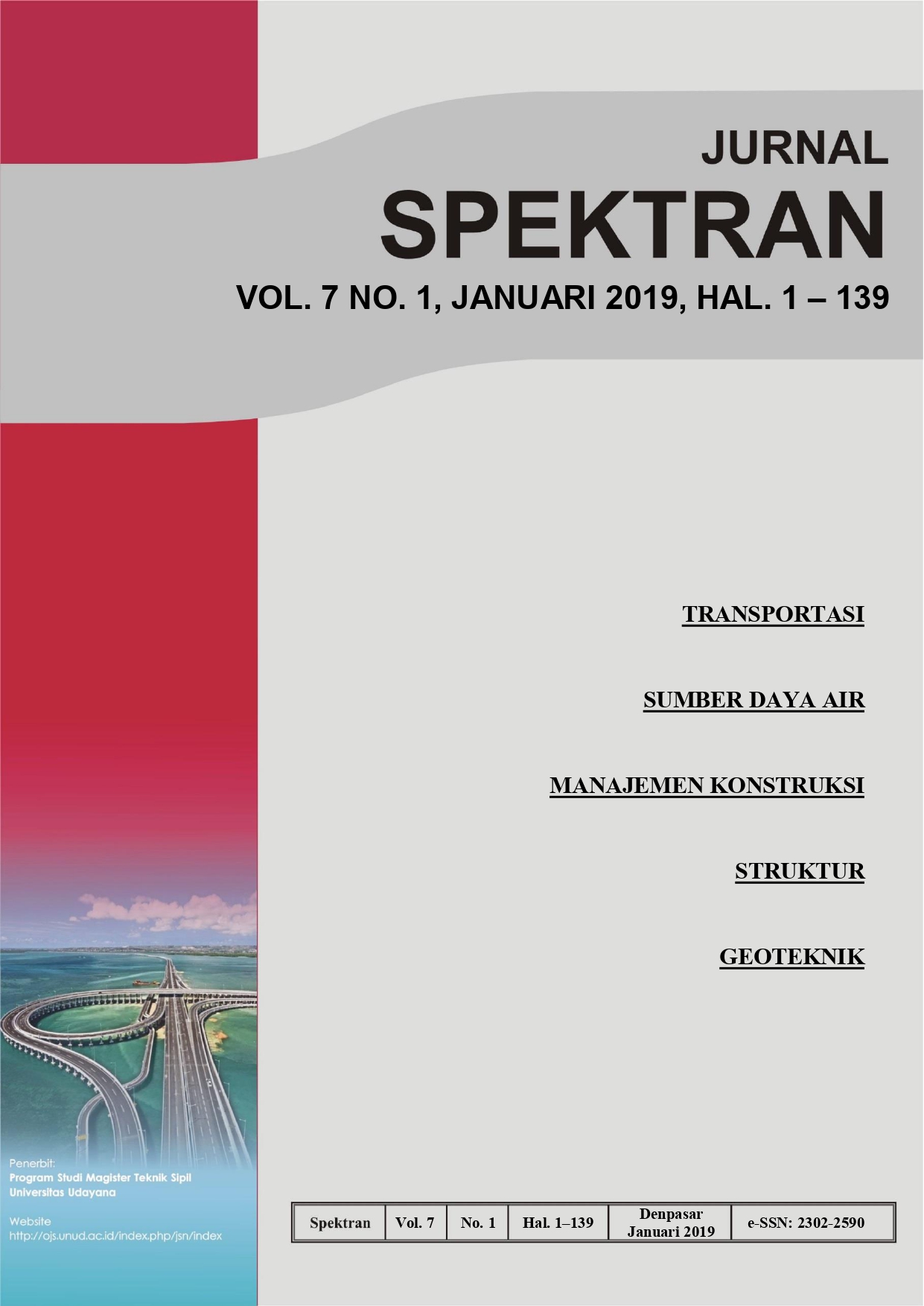ANALISIS INTRUSI AIR LAUT PADA SUMUR GALI DI KAWASAN CANDIDASA KARANGASEM
Abstract
ANALISYS OF SEAWATER INTRUSION THE DIG WELLS AT CANDIDASA KARANGASEM
Water intake in large quantities and uncontrollable in Candidasa area can cause groundwater level deceased, which will cause the flow reversed from sea to land and cause intrusion of seawater into the mainland. It is also mentioned in Karangasem regency regulation article 24 number 3 point H that seawater intrusion prone area located in Candidasa and Tulamben area. This study aimed to invetigate how far is the effect of seawater intrusion based on soil water conductivity value, considering the position of interface, and maximum debit can be taken to prevent wide intrusion. This research method uses descriptive quantitative method. Furthermore, to determine the extent of the intrusion occured, measurement to the value of well conductivity, measurement of groundwater level, depth of the well, well elevation and well distance from beach line for the 5 sample of wells. Interface position counted using the equation of Badon Ghyben-Herzberg, and the debit maximum exploitation counted using the equation of Mercado and Schmorak. The result of this study showed that the value of conductivity decreased, if the distance of well getting farther from the beach line. There are 3 wells getting intrusion with conductivity value of more than 1000 mS/cm, the 3 wells has distance of less than 100m from beach line. Interface position in the location of this study has got intrusion in distance of 81,52m from beach line. The maximum debit allowed ranged from 1,448 m3/days until 125,90 m3/days. As references to prevent wide intrusion, therefore to dig next well it is better to use distance of more than 100m from beach line, with interface deep that still under value of MSL, with well depth of ±15m




